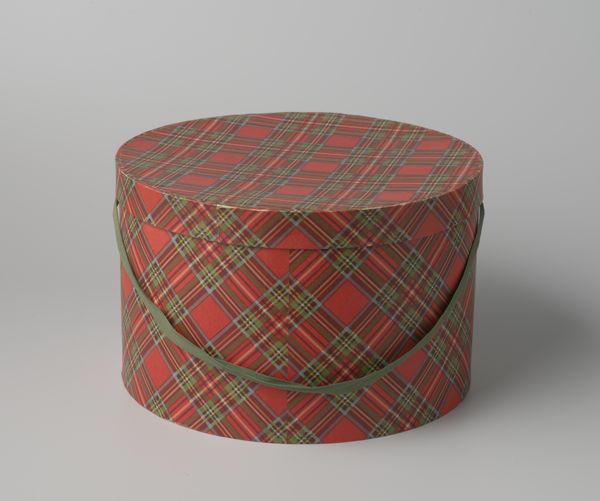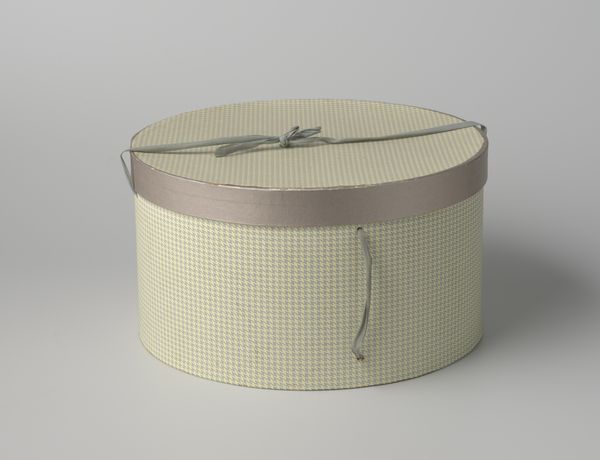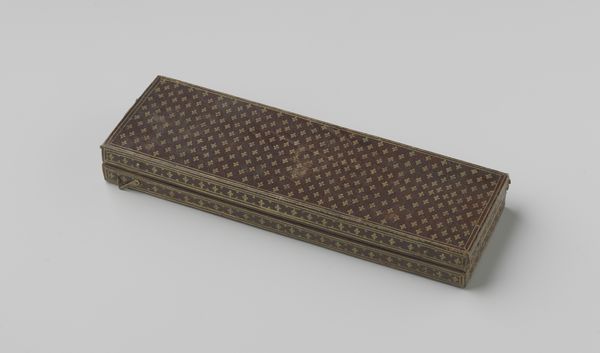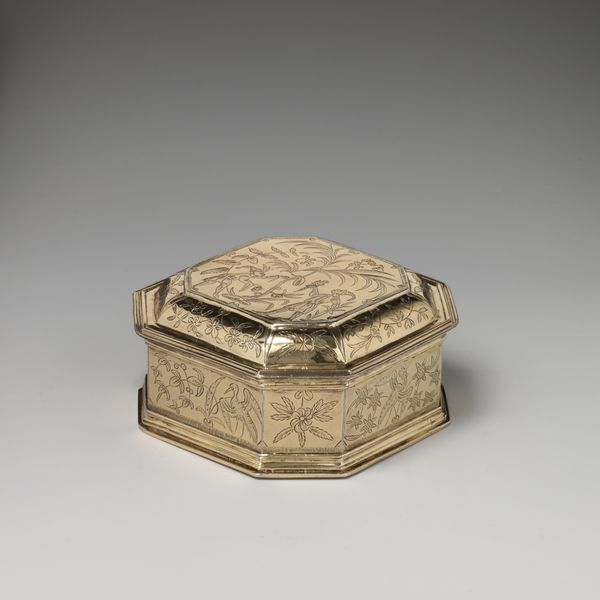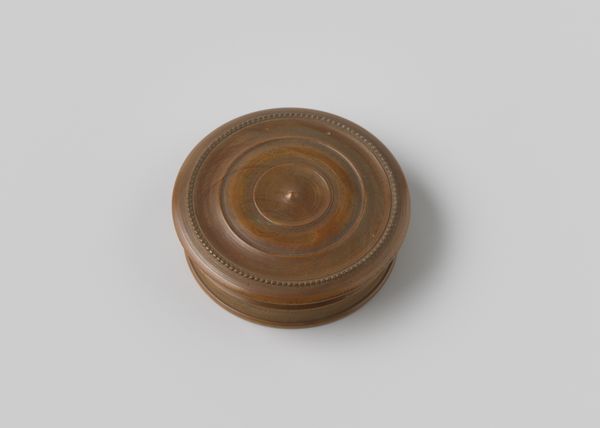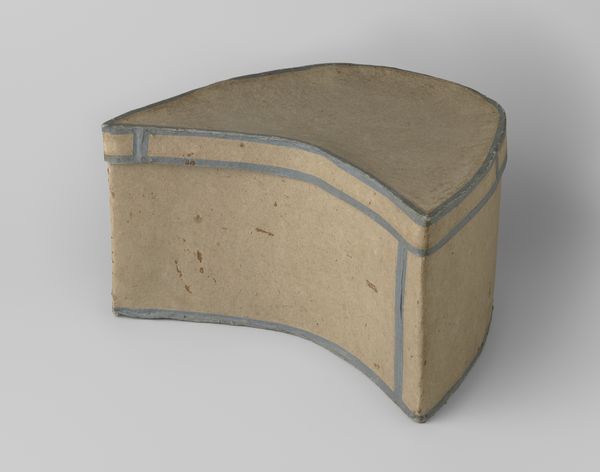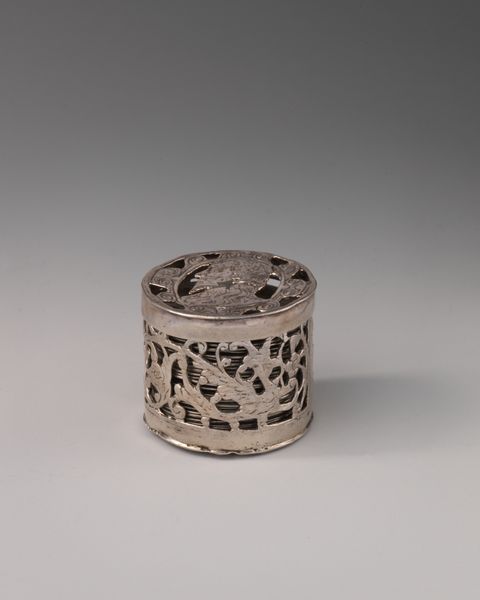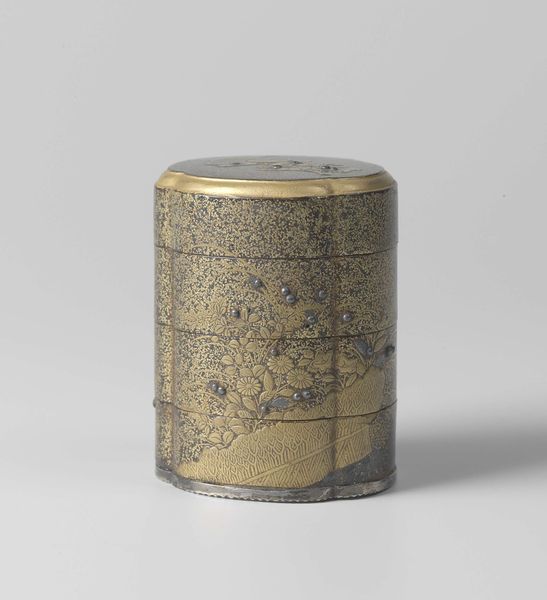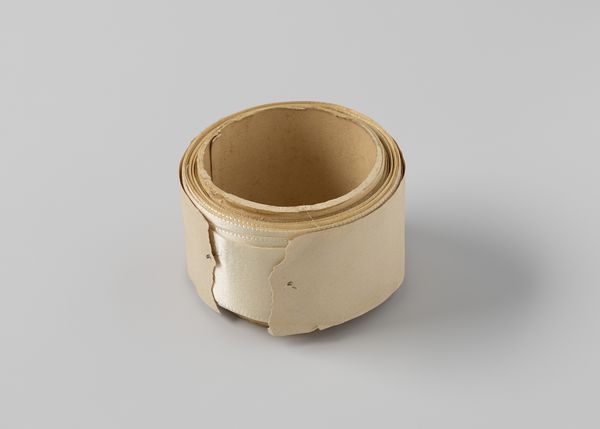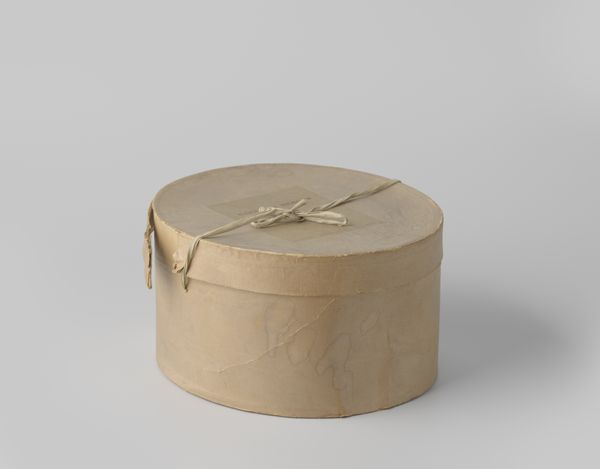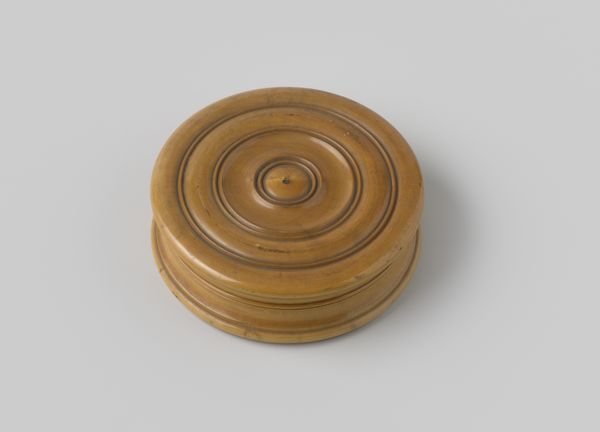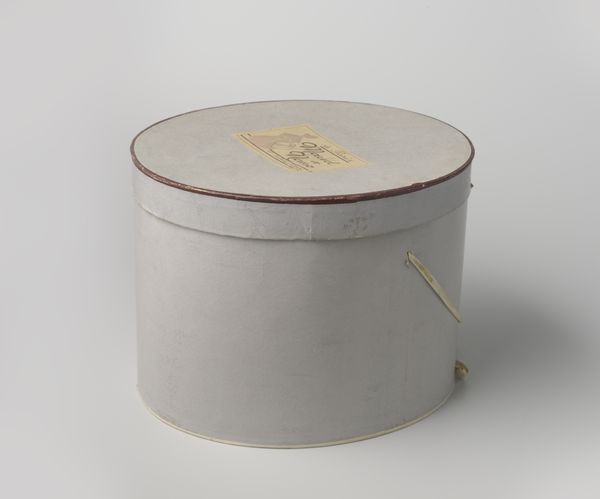
Hoedendoos, rond, van karton beplakt met wit papier met pied-de-poule patroon in zwart fluweel 1966
0:00
0:00
mixed-media
#
mixed-media
#
pattern
#
decorative-art
Dimensions: height 19.0 cm, diameter 30.5 cm, height 3.5 cm
Copyright: Rijks Museum: Open Domain
Curator: Our attention is drawn to an item from 1966 attributed to Maison Angélique: a round hatbox crafted from cardboard covered in white paper, adorned with a black velvet houndstooth pattern. Editor: Oh, it's delightfully retro! It immediately brings to mind images of impeccably dressed women, maybe off to a Parisian fashion show or a stylish garden party. Curator: The prevalence of hatboxes like these speaks volumes about the socio-cultural significance of hats during that era. They weren't merely functional; hats were a statement, reflecting status and identity. Editor: Exactly! And consider the material: cardboard, paper, even the velvet – it suggests a conscious effort to democratize luxury. It’s about access to aspirational style, making haute couture attainable for a broader consumer base. How were these boxes produced on a larger scale, considering the labor involved in applying the velvet pattern? Curator: Well, Maison Angélique probably contracted with workshops specializing in such decorative finishes. The brand would ensure uniform standards while benefiting from economies of scale in specialized production. The use of pied-de-poule elevates this container above mere utility; it’s essentially decorative art. Editor: Decorative, but also so evocative. The texture, that high-contrast pattern, almost vibrates with a mid-century energy. This isn’t just about containing a hat; it’s about presenting an image of fashionable consumption. The pattern is tactile and has a strong visual appeal; I wonder about the workers who were responsible for its delicate assembly and what impact industrial manufacture of high fashion objects may have meant for them? Curator: Your focus on production conditions highlights an important dimension to consider. The fashion industry had, and still has, complex labor practices shaping its final goods. Items like these remind us that glamour often conceals intricate, sometimes fraught, making processes. Editor: Looking at it, you know, beyond its immediate stylishness, it’s a testament to the material culture surrounding fashion. What was disposable then is an art object now, speaking of design and cultural trends that remain pertinent. Curator: Absolutely. Examining pieces such as this hatbox gives insights into how fashion functions as both art and industry. Editor: Indeed, seeing this makes me think more about the material origins of style and design during this period.
Comments
No comments
Be the first to comment and join the conversation on the ultimate creative platform.
